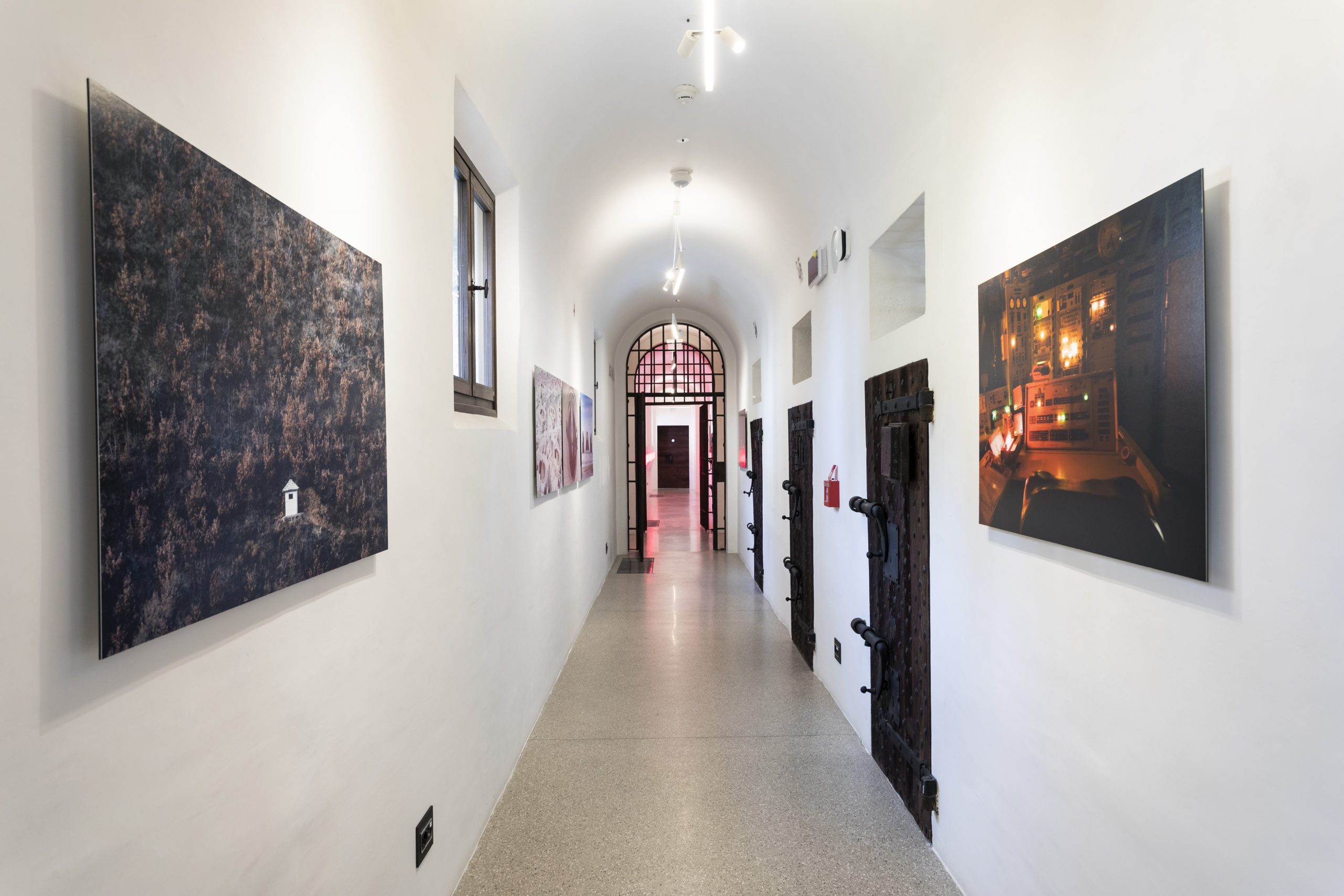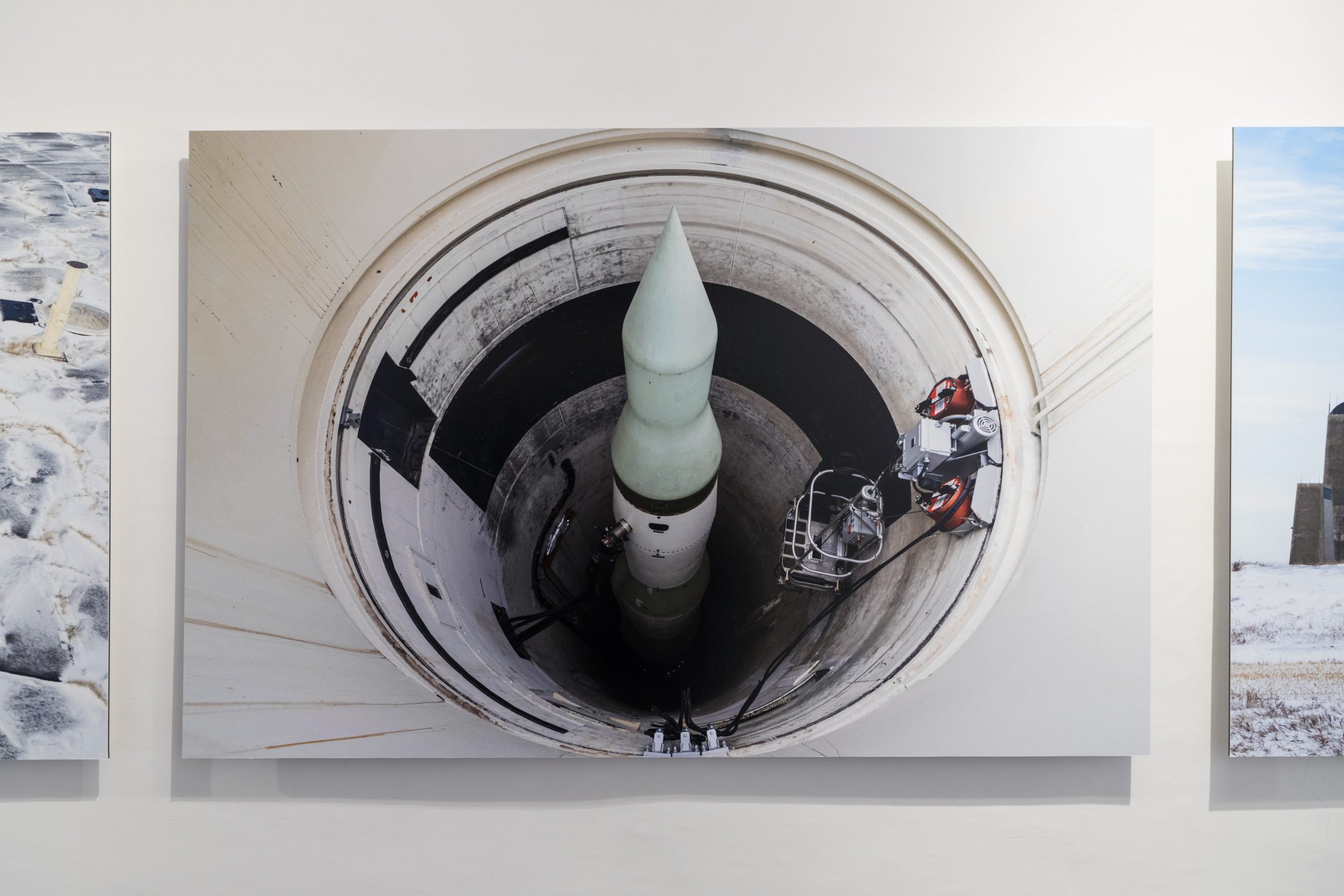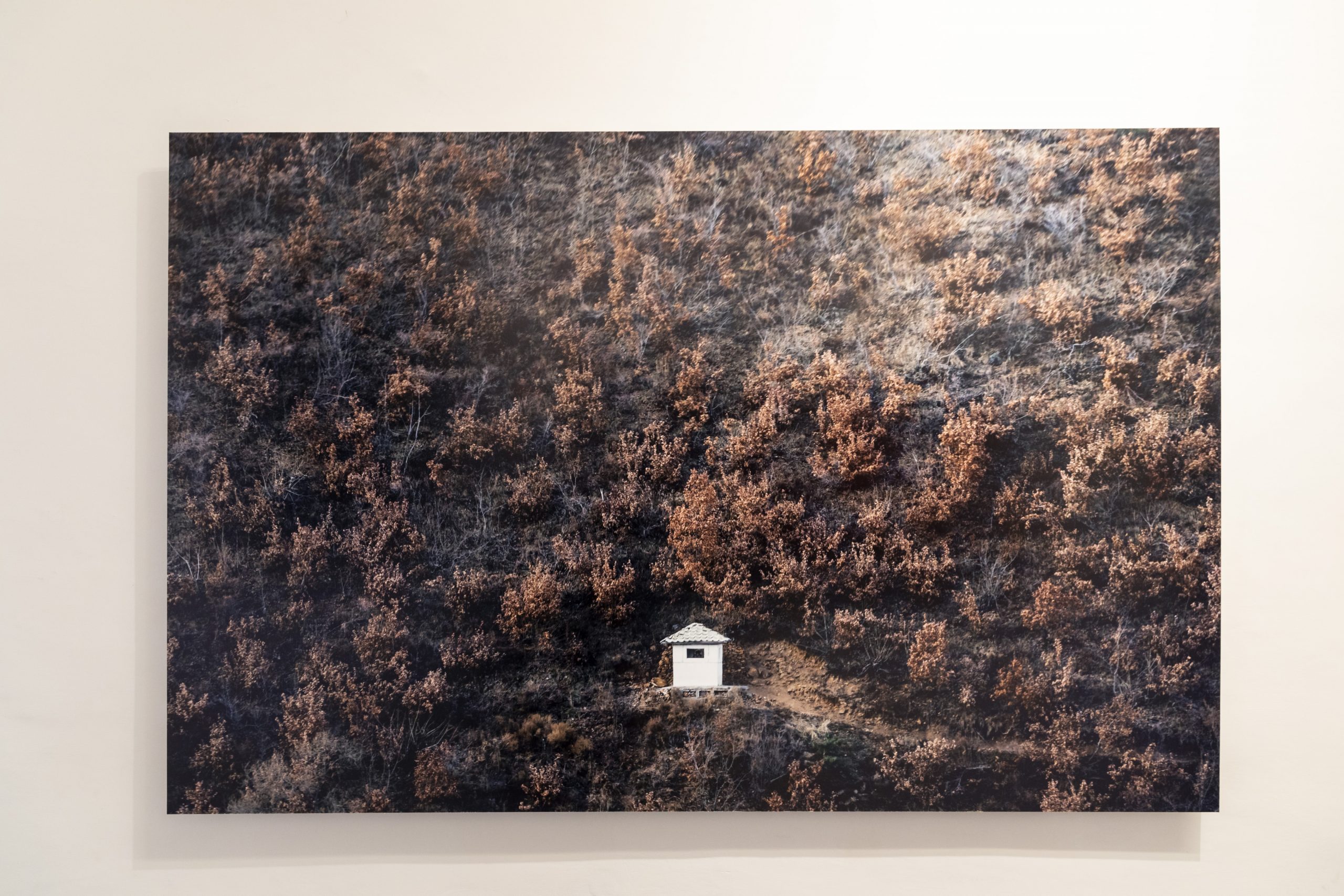Artist
Sim Chi Yin
Sim Chi Yin’s series Most People Were Silent, commissioned in 2017 for the Nobel Peace Prize, takes us along the China-North Korea border and to the former U.S. missile sites. Straddling the border between documentary and speculative, Sim reflects on humankind’s development and use of nuclear weapons in two opposed countries. These photos reveal spaces abandoned or foreclosed from the public eye, and, without aestheticising the annihilating horror of nuclear potential, emphasises the lingering risk of nuclear armageddon. This selection offers a glimpse of the North Korean border from the Chinese side; Sim used satellite data to map sites closest to where scholars deduce there was a North Korean nuclear missile base, as well as a plant that produces centrifuges for nuclear power plants. She then travelled to the other side of the Pacific, to North Dakota, where we find the most advanced missile defence site of the 1970s, decommissioned almost immediately to further anti-nuclear negotiations with the USSR. This is followed by a photo of Minuteman II, an intercontinental missile capable of carrying nuclear warheads, along with the missile base commander’s desk from which the command to operate the warheads would have come. Sim explores these scenarios from two opposing countries and invites us to think beyond their roles as “rogue state” and the world’s rightful policeman, and about the present-day threats that lie beyond these nuclear relics stored in museums.
This selection presents Sim’s photos of:
A border guard in his sentry post on the China-North Korea border, close to a suspected North Korean missile base, October 2017
A factory producing into the night, in Manpo, North Korea, October 2017
An anti-ballistic missile defense radar facility, North Dakota, November 2017
Hatches over silos which in the 1970s held missiles meant to shoot down incoming Soviet warheads, North Dakota, November 2017
Minuteman II Missile, South Dakota, United States, November 2017
The desk of a commander in a control room of a decommissioned Titan II Missile Site in Arizona, November 2017
Sim Chi Yin (1978, Singapore, Singapore) lives and works in New York where she is currently a fellow on the Whitney Museum’s Independent Study Program while pursuing a visual practice-based PhD in War Studies at King’s College London. Sim works with photography, moving images, archival research and performance, and focuses on topics such as history, conflict, memory and exploitation. Her work One Day We’ll Understand was exhibited at the 17th Istanbul Biennale (2022), and she has had recent solo exhibitions at: Zilberman, Berlin (2021); Les Rencontres d’Arles, France(2021); Hanart TZ Gallery, Hong Kong (2019); Institute of Contemporary Arts, LASALLE College of the Arts, Singapore (2018); Nobel Peace Museum, Oslo, Norway (2017). She has exhibited in group shows at Istanbul Biennial, Turkey (2017) and Framer Framed, Amsterdam, The Netherlands (2018). She was commissioned as the Nobel Peace Prize photographer in 2017.





























